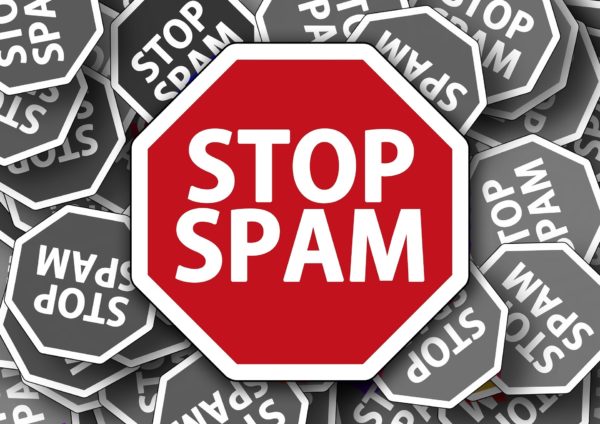3 Sneaky Tricks To Getting Your Headline Length Right

Getting your headline (subject line) right for your email is important. Most subscribers will base much of their behaviour on this aspect of your email. If it is too long, then important parts of your message will be missing, this could lessen the value of your email and result in a campaign that struggles.
The best length for a headline is between three to five words. Having it under 10 words is considered good, but the results of the campaign will start to lessen.
One of the main reasons for this is that more than half of all emails are now opened on mobiles and these have less space for subject lines. Therefore, you need them to be smaller to cater for this audience.
This can be challenging with certain subject lines. So, here are some sneaky tricks to get round the problem and make your headline just the right length.
1. Use The Preheader Text
The first aspect is to use the preheader text space as part of your subject line. This is a great place to put some content because it often appears with the subject line and combined they can make a valuable sentence that the audience can build your brand’s message with. For example:
Subject line: Get 10% off today when you spend more than $20.
could be changed to:
Subject line: Get 10% off today
Pre-header text: when you spend $20 or more.
Another example:
Subject line: Don’t miss out on our fantastic 10% off deal
this could be changed to:
Subject line: Don’t miss out
Pre-header text: on our fantastic 10% off deal.
2. Remove Unimportant Words
Sometimes we add words in sentences to make them grammatically correct, but they just aren’t needed culturally. Your audience will know exactly what you mean and would prefer to know what you’re saying with a few words, than only getting half the message because the text was cut short by their email client.
A good examples of this could be:
Subject line: Get 10% off today when you spend more than $20.
Could be changed to either:
Subject line: 10% off when you spend $20 or more
or
Subject Line: Spend $20 and save 10%.
The subject lines in both of these mean the same thing, but they’re just worded differently and take up less space.
3. Use Symbols/Emoji’s In Your Email Headlines
Another great example is to use symbols or emojis in your email subject lines instead of words. Subject lines with emojis in them have the added bonus of a higher click through rate. Symbols can also be used to convey messages in far shorter space.
A good example could be:
Subject line: Get 10% off today when you spend more than $20
could be changed to:
Subject line: Get 10% off today when you spend $20+
or
Subject line: Spend $20+ for 10% off.
A good way to use an emoji would be like this:
Subject line: Use these self-help books to make you happy.
You could change the books and happy words into emojis. There are lots of emojis that are available for you to use.
Conclusion
Headlines and subject lines are only supposed to be a certain length. Any longer and they will be too big for most email clients, especially those on mobile devices. There are numerous ways you can get around this by using some sneaky tricks to reduce the length.
We’ve highlighted three sneaky tactics you can use above. All will greatly reduce your subject line and make them more engaging. Some will even see better campaign results (like using emojis).
How do you reduce the length of your subject lines? Have you monitored subject lines for their performance?
Let us know in the comments below.
Read post Post a Comment. Tagged in: email design, Subject Lines
How To Brainstorm Your Email Marketing Strategy

You can’t just create an email campaign and run with it. This strategy creates a very poor return on your efforts and the disjointed campaign would likely lose you subscribers as well as revenue. Instead, you need to develop a long-term plan that can give you, your campaigns and subscribers direction.
But how do you brainstorm an email marketing strategy? Here are some important steps in the development of campaigns you need to follow in order to get the best results.
1. Look At What Is Important For Your Business To Sell
The first thing to look at is what is important for your business to sell. Is there a product that performs better than others, especially online or via email? This is important because you need to know what direction you want to take your campaigns in.
You also need to know the price point and the main customer demographics. This information can determine how many touchpoints you need to create a sale. Generally speaking, the higher the ticket price for the product, the longer the campaign you need.
Research has also found that 50% of online sales take between five and twelve touchpoints to create a sale.
2. Determine What Points You Want To Get Across In Your Sales Pitch
When it comes to selling, you need to convince customers about the benefits of your solutions and the potential to solve pain points with the customers. This means you need to consider your product’s main users and what pain points they have and how your product can help them.
This creates you a long list of points that you want to get across with your email marketing campaign. These should be listed down and developed into stories. You can use current customer testimonials as a way to demonstrate your points.
3. Think About The Sales Process
Next you need to know more about your sales process and how your email marketing will fit into that process. For instance, will your emails lead directly to a product page that your subscribers can purchase from? Or do you need a way to qualify subscribers for purchasing that can be used by sales teams to complete sales?
When you’re building an email marketing campaign, this is an important point. Setting your campaign the right way will mean better results and less wasted time for both you and your customers.
4. Develop Timings For Your Campaigns
The next most important part of the brainstorming session is to develop timings for your campaigns. Your audience is always going to be different from another brands. Therefore, you should not read too much into when customers are online for your business.
However that doesn’t mean that your company doesn’t have an ideal time to send out campaigns. You need to know this. And you also need to determine how frequently you should be sending content to your audience. Too often, and you can alienate your subscribers and reduce the number on the list, while too few emails can mean that potential customers forget about your branding.
5. Sit Down With A Team And Develop Content
Don’t let emails be developed on the fly. Create a pre-constructed campaign that lasts a long time. This could be an auto-responder list or just a standard campaign you’re prepared. What is important is that several people contribute. It allows for greater depths of creativity and better results when those with different opinions work together on marketing campaigns.
At the same time, you can be sure that everyone knows what is going on, so they aren’t surprised when campaigns do go out.
Conclusion
Build your next campaign in advance and start with a brainstorming session. These tips will help you get the most out of your campaign and see revenue and profit growth.
Do you brainstorm email marketing campaigns? What tips do you have?
Let us know in the comments below.
Read post Post a Comment. Tagged in: campaign success, email campaigns, email marketing campaigns
Optimising Your Email Content Without Being Obvious

There are several ways that you can optimise your email content. This will yield great results, like higher click through rates, better conversions and less email subscriber churn. However, sometimes we can take it too far and optimise content so much that users start to see these tricks and ‘rebel’. This is when we start to see the opposite impact and campaigns start to fail.
So, how can you optimise content in your email without it being too obvious to the reader? Here are some of the top options.
1. Stop With The Name
One of the top ways is to not personalise emails with a name. It is obvious you’re just doing a mail merge function and these have been around for more than two decades now. Your audience don’t see it as personalisation, they just see it as normal practice.
Personalisation should be about the way you’re publishing content. Audiences should receive specific content that is relevant to them at the right time. Not generic content that could be sent to anyone.
2. Optimise Images Outside Of Your Email Program
One common problem with emails is that they have high-resolution images that are memory intensive. This makes it hard for them to be seen on mobile devices and can take a long time to load on desktops.
Images are however very good at converting readers into consumers. So they are essential. Therefore, the most important aspect is to make sure that you’re optimising images. This should be via the size of the image (smaller the better) and the image size. Using programs like RIOT are excellent because they can reduce the memory usage significantly, without you losing any quality in the image. And it is a free image optimiser.
3. Don’t Do Too Many Tests At Once
Split testing is really important. It allows you to see what audiences prefer. However, split testing and changing aspects on every email isn’t very efficient. Audiences become more aware of what you’re doing and don’t associate a style with your email marketing campaigns.
This can have a negative impact on what happens. Many audience members might abandon your content and might spread more bad news around.
Ideally, you also want to increase the number of times you repeat a test for a few campaigns. For instance, if you run the same test of which colour the call to action should be five times, you might find that four out of five of those tests show audiences slightly prefer a red call-to-action button. However, if on that fifth test they overwhelmingly prefer a blue button, there is a hard decision to make. The averages might show the blue button is better.
Therefore, one email can’t determine the true results from a test.
4. Use Third-Party Data Where Possible
Optimisation is an important part of running your email campaigns. However, you don’t have to rely on your own data. The internet is a fantastic place where you can find lots of information, including the results of how other people’s email campaigns have succeeded. This includes what changes they’ve made and how audiences have responded.
This can therefore, allow you to cut out some of the split testing phase and implement optimised content from the start. Things that might be mentioned include what colours text, buttons and images should be used in addition to timings and lengths of emails. So you can make lots of informed decisions before you even send your first split test email.
Conclusion
Email marketing is always about creating highly converting content for your audience. However, to do this you must optimise emails. It is very hard to achieve without at least some split testing. However, you can use some of the tricks and tips above to reduce the amount of testing you need to do and ensure that it isn’t obvious you’re testing audiences.
How do you optimise email content? How do you make it less obvious?
Let us know in the comments.
Read post Post a Comment. Tagged in: email design, split testing
Subject Line Tricks To Improve Open Rates

When it comes to improving open rates, there are several aspects that are key. One of those is the subject line that the audience sees. If you have a boring subject line, then your mail can be lost in busy inboxes. However, if you make slight tweaks to your mail, then you can make it stand out and improve your campaign’s performance.
So, what are the subject line tricks you can use to improve open rates?
1. Bracketing Text
One of the newest ways that people have started to build upon their open rate is by including brackets in their subject lines. A line like this:
Some amazing daily deals that can’t be found elsewhere
can be turned into
Some amazing (exclusive) daily deals
The brackets used to be unusual. So it drew attention to the email in an inbox. However, more marketers are starting to do this, so consumers are going to get used to the practice soon. That doesn’t make it less valuable, there are still going to be some audiences who are more likely to click through on this type of subject line.
2. Avoid Blacklists (Spam) Words
Another key aspect to getting your emails opened is getting them seen in the first place. When you include spam words in your subject lines then mail servers are going to be blocking your content, making them bounce, or sending them to the spam folder, where few people check for emails.
There are a lot of words that can be considered bad for spam. So be sure to check out those lists carefully. We’ve even created an article recently where we detailed some of the worst options for words.
However, two good examples would be the words ‘daily’ and ‘deals’. These are often associated with spam and so should be removed and replaced. So this subject line:
Some amazing (exclusive) daily deals
could be turned into
Some amazing (exclusive) products available today.
3. Add Ownership To The Subject Line
Call-to-action optimisation is all about giving ownership of the action to the reader. The same can be said to email subject lines. After all, they are both there to tell the audience to do something. In the case of the email subject line, it is to read the rest of the content.
There are several ways to add ownership to a subject line. But the most powerful is by including the word ‘you’ somewhere in the text. While personalisation used to work, customers are becoming more aware of the technology that can just add it in. So placing a name within the subject line is becoming less effective.
Therefore, this subject line:
Some amazing (exclusive) products available today.
Could become
Some amazing (exclusive) products available for you today
4. Be Controversial And Keep A Secret (Very Badly)
Another key tactic used by numerous other people on email marketing is being controversial and implying a secret. This adds intrigue and a desire by the audience to know what is hidden within the email. Controversial aspects are hard to apply without offending certain elements, but there are ways of doing it.
You don’t have to use the word secret, or confidential within the content to get the secret element across. Instead, you can use words like ‘exclusive’ or ‘just for you’ to get that same sense. For instance, in the example above, we’ve used the word exclusive. That implies scarcity and secrecy. Therefore, audiences are more likely to click through.
To add controversy, you could add something like:
Some amazing (exclusive) products available for you (that your [name of relation] doesn’t want you to have)
The name of relation can be swapped with any relation like wife, husband, mum, dad, etc..
Conclusion
Improve your email marketing success with some of the tips above. When they see your new subject lines, you should see an increase in the number of people who are reading your content and therefore making a purchase.
How do you monitor your open rates? Have you tried split testing to see what subject lines perform better?
Let us know in the comments below.
Read post Post a Comment. Tagged in: email content, open rates, Subject Lines
The Blacklist – Words To Avoid In Your Email Marketing

Email marketing is about getting people from their email inbox to your business’ website. There are several methods to do this, but in essence, you have to rely on the written word to convince people to take action.
Therefore, you have to know which are the best words to use in your marketing. There are lots of words that are associated with good performance, but there are many more that are also blacklisted. These words can be unconvincing to customers and can therefore lead to mistrust between the two of you. Or worse, they can get you caught in spam filters and no-one will see your content.
So, what words do you want to avoid? Here is the blacklist of words you shouldn’t use in email marketing campaigns.
Act now – while act now is often considered good for website call-to-actions, this word is often picked up on by spam filters.
RE: – unless the email is actually a reply, don’t use this in your email marketing. Email servers are good at spotting which are true replies. Plus, readers will be annoyed when they realise they haven’t started a conversation with you. You need to build trust with your audience.
Additional income/your own boss/make money/earn – anything that seems like you’re going to offer someone a way to earn money automatically sends out a spam message. Generally, email users don’t like this and spam filters are more likely to relegate your message to the spam folder.
Free – nothing is ever for free. You always have to give something, even if it is information. So, don’t use the term, you’ll only upset your audience.
Hello/Friend/Family – making it seem like you already have a relationship with the audience that is more than B2C or B2B is not going to help. People are wary of who they share their contact information with and these words are often targeted by spam filters.
Winner/win/congratulations – there have been so many fraud schemes that use these terms that email filters now remove messages with these terms in. If you have a competition and want to announce the winners or contact people who have won, use Facebook, Twitter or another social media program. Or get the contact details of the entries and phone them.
Guarantee/promise/trust – While these words are designed to give people confidence in your credentials, they often don’t. People should be able to trust you without you asking them to. Therefore, don’t use these words in your copy.
Another Few Email Marketing Copy Pointers
It isn’t just the words above you shouldn’t use. Here are some of the other tips you should be following to get past spam folders and to get people to read your content.
Don’t Make Spelling Mistakes
People associate spelling mistakes with poor education, poor service and fraud. Therefore, bad spelling mistakes are going to detract from your message. Always get a professional to proofread your content or use a grammar program to help you get it right.
Increase The Number Of Words In Your Subject Lines
Those with just one word tend to get pushed to spam folders. Always have between four and eight words in your subject lines. This will help you get more of your messages read.
Don’t Use All Caps
Only the first letter of any word should be in capitals in a subject line and the first letter in the sentence within the copy of the email should be capitalised (unless it’s a noun). Anything else and it will seem as if you’re shouting at your audience. This is very aggressive and people will immediately disregard your email.
Don’t Use Exclamation Points In Your Subject Line
Another point is to avoid using exclamation points in subject lines. It can look aggressive and unprofessional.
Conclusion
You want to avoid using the wrong words in your email marketing, such as the examples we have given you above. Otherwise, your emails could end up in your subscribers’ spam boxes and you will have wasted your efforts and lost out on potential revenue.
What words do you avoid in your email copy? Have you tried split testing your content to see if these words affect open/click through rates?
Let us know in the comments below.
Read post Post a Comment. Tagged in: copywriting, email copy, email words
The Easiest Formula For Setting Out Your Email

Email marketing is one of the best ways to sell online. Research has found time and time again that the return on investment from email marketing is much higher than other digital marketing pathways. However, there are lots of different ways that you can utilise email in your marketing, and there are some that are easier to operate than others.
Using certain formulas for email marketing, you can achieve more than the average brand. Here is one of the easiest formulas that you can use to generate revenue through email marketing.
The Auto-Sequence
The Auto-sequence is a series of emails that are automatically sent to customers based on behaviours or conditions that you’ve preset. For instance, some brands create an auto-sequence that is related to the subscribers birthday, anniversary or time on an email list. These are pre-written and fully automated, so that you, as the business owner, have limited involvement once set up.
This is what makes it the easiest formula for setting out your email. All you have to do is to create a series of emails that are ready to go. When certain conditions are met, the emails are sent out. You can just look at the results in your dashboard or when sales have been made through your store.
However, even with an auto-sequence, you need to generate a design that looks great to audiences whether the audience is using a desktop or mobile device. So you also need a good design.
Designing Your Email
The simplest email design is often the easiest. So, here is our quick list of suggestions of what to include in your email marketing design.
Headline
The first thing you need to include is a headline. This should be attention grabbing and can be similar to your subject line. However, it is often best to have a slight adjustment, for instance going into a little more detail or being more personalised. However, personalisation in the email subject line is what gets your emails opened.
An Image
Next you need an image. Images help to covey messages quicker to audiences. The same message can be displayed in one image as can be in a thousand words. They also increase interest, engagement and conversions within an email.
Images can be added so they include text within them, and an image in an email should not be too large. Most inboxes don’t support images that are more than 600 pixels wide, so it is best to keep them under this and below 400 pixels wide.
Text
The next stage should be detailing your message. This should be a short message of less than 200 words. This prevents audiences from becoming bored and allows for easy read on a mobile device. It is better to keep to one strong message and connect to a landing page that has more details on it rather than bore people on your emails.
Your text should contain limited spam words as this can be off-putting and lower response rates to your email.
Video (Optional)
Here you can place a video that is hosted from YouTube or another video sharing website. This is optional and doesn’t need to be done, but videos can help with email conversions.
Call To Action
Finally, you want to place a call to action. This should direct the customer to make a purchase or take another positive action. Call to actions need to stand out on a page and should include as little text as possible. Remember to always give ownership to the reader and add urgency to all email call to actions.
Conclusion
With the tips above, you have a simple, effective and easy formula for running your email marketing campaigns. They will help to generate revenue from your campaigns with you not having to do too much work.
How do you design your campaigns? How do you design your emails?
Let us know in the comments below.
Read post Post a Comment. Tagged in: email campaigns, email design
3 Tricks To Writing Amazing Email Headlines That Get Opened

Getting your emails opened is the first step in any email campaign. The more people that open your emails, the more people that are likely to take action. There are many ways to improve your open-rate, however, writing great email headlines is one of the best ways.
So, here are some amazing tricks you can use to write those email headlines that will encourage audiences to engage with your content.
1. Use Numbers In The Headlines
One of the typical ways you can entice people to open emails is to include a number, often written in numerical form, within the subject. For instance, “7 Secrets To Have A Great Christmas” sounds better than “Secrets To Have A Great Christmas”.
Numbers offer several things to audiences. Firstly, it sets an expectation that they can measure against for satisfaction. Secondly, it is because a number is very attractive to the human eye. Therefore, when your email is listed among loads of others, yours with a number in it is more likely to be opened.
You don’t need to have a large number of tips or tricks for your audience to digest in an email, just one is better than none. An example of this could be: “What is the 1 secret your teachers didn’t tell you about school?” compared to “What’s the secret teachers didn’t tell you about school”. The second one has less authority and is not as attractive, that little number adds a lot of value to your readers, even though the topic is the same.
2. Be Controversial
Sometimes being a little controversial can add an attraction to audiences. For instance: “What is the one secret your teachers didn’t tell you about school?” adds a little controversy because it is talking about what teachers have kept from students.
Other writers have used controversial headlines to get people to open emails. However, that doesn’t always work. You’ve got to create a controversial headline that doesn’t impede your message. In fact, your controversial subject line shouldn’t be against the main message. For instance, don’t write a subject line that says: “You don’t want to come to my event” and then have an email that suggests what they’ll miss out on and eventually say “unless you want to come”. The whole subject line is wasted and trust in your content undone.
However, you could follow the example of Ian Brodie who wrote an email about why networking didn’t work for him. His headline was why networking didn’t work (for him). He got high praise for that email and the controversial headline worked.
3. Offer Secrets
Humans love to be in the know. We like to know something that others don’t. This is why offering information that is ‘secret’ in emails is such a good way to get people to open them. Secrets seem to imply that the reader is going to get information that they’ve not seen or read from before. This is a great way to get them to open it because so many emails include the same information.
For instance, if you had a subject line: “Five ways to grow your business” people have probably read articles and emails about this a lot. They might think your email is a rewrite of many of those content pieces. However, if you change it to “Five secrets that will grow your business” audiences will think that that new information is included within the article. This makes it more likely to be opened.
Conclusion
The three tricks that we’ve mentioned above are the ones that you’re going to need in order to build a successful email marketing campaign. They are three tricks that will help get your emails noticed in crowded mailboxes with busy audiences. When more people read your content, you can immediately see more returns on your investment.
What tricks do you have for your headlines? Have you tried any of the above?
Let us know in the comments below.
Read post Post a Comment. Tagged in: email writing, open rates, writing
How To Write Content That Avoids Spam Filters

Sometimes, campaigns can be ruined by email being sent to spam folders. There are a few things that can cause this. The first is the user marking your emails as spam and therefore your content being sent directly to the spam inbox. The other is the inbound server marking your content as being spam based on an algorithm.
This can create significant challenges for your campaigns. Firstly, anyone who is not getting your emails due to them being designated as spam is unlikely to interact with your content. This can make the ROI for your campaigns limited. In addition, if just a few mail servers mark your content as spam, then other servers could do the same. This can further infuriate you and make your marketing costs rise without any benefit.
Finally, your reputation with customers can be lowered if they constantly see your emails in the spam folder.
So, here are some of the best ways that you can write content that doesn’t mark your emails as spam.
1. Avoid Using Words Associated With Spam
There are thousands of words that are often associated with spam emails. Filters look for these in several areas of your email. The first area is the subject line. Using words like free, discount, earn and other similar words, can often mark your email immediately as spam. This is because a lot of spam emails do contain these words.
If you’re a business services provider, you might also want to avoid words like ‘marketing’ and ‘financial’. These are often associated with spam emails. And don’t write, “this is not junk”, that is one sure way to end up in the spam folder.
2. Check Your Spelling
The most obvious sign that someone is sending spam messages is that content has a lot of spelling and grammar mistakes. This is because, generally speaking, a lot of spam content is written by people who don’t have the necessary writing skills to maintain a professional writing standard.
If you aren’t confident in your writing skills there are several options for you. You could hire a professional writer. There are several places you can hire these people from, including freelance websites and local writing groups. Or you could hire an editor to proofread all your writing work.
You could also use online spell checkers. There are some available for free out there, so it doesn’t need to cost you much to improve your writing skills and ensure your content is error-free.
3. Limit The Overuse In Your Writing
Whatever you’re writing about, you want to make sure that you aren’t writing the same words over and over again. For instance, if you are writing an email about plates, you don’t want to be using the word plates more than three times for every 100 words. Ideally, you should really be using that word only once in every 100 words.
This prevents your content from being labelled as being spam because it is keyword stuffing. This is normally associated with black hat techniques in SEO, but it can also be used in emails to grab the attention of the audience and filters can penalise you for this.
4. Use Plain Writing
Don’t overcomplicate your writing by adding lots bolding, italics and underlining. At the same time, keep your content all the same size (except for headings). Those who use spam techniques often have content that is marked differently (bolding, italics and underlining) to identify key phrases to draw the attention of the reader.
Filters look for these text settings and will send emails to the spam folder if you use it too often. That doesn’t mean you can’t use it, but perhaps only once in an email when it is really important.
Conclusion
You don’t want to end up in the spam folders of your audiences. Therefore, look at ways to improve your writing to help you avoid spam folders and have better results from your campaigns.
How do you write your emails? Do you use a freelancer or a grammar program?
Let us know in the comments below.
The Best Email Marketing Tips For Small Business In 2019

Email marketing is by far one of the best ways to market your business. Year-on-year, email marketing has been rated as one of the best marketing platforms for ROI. It is simple to use, acceptable to consumers and can reach numerous customers long after you’ve sent your email.
However, many small businesses often struggle to use email marketing because, on the first few campaigns, many don’t see the returns they expect. However, email marketing success is dependent on the best practices. There are numerous tips that can help with this. So, here are our top tips for a successful email marketing campaign.
1. Segment Your Email Marketing List
The first thing you should be doing is to segment your email marketing list. Not everyone on your list is going to want the same content. Some will be interested in different products or have differing problems. Therefore, you need to find ways to distinguish between people on your email marketing list and place them in groups.
Once you’ve done this, you can send different content to these groups for higher engagement and conversion rates. This also helps with ensuring that audiences aren’t abandoning your email list because they keep getting content that is of no interest to them.
2. A/B Test Your Content
Do you really know what your audience prefers? The design, including placement, colour and even style of your email can make a huge impact on your email marketing success. The only way to know what your audience really likes is to have your content A/B tested (split testing) to ensure you’re getting the best results from your campaigns.
What you do with this is send two versions of your email and have a single difference on each email. For instance, you could have the colour of the call-to-action button different. Then on the results, you can see which version audiences preferred. Use this in the next campaign and make a new change to optimise results.
3. Use Videos In Your Content
Videos in emails are important. With today’s technology, videos can be hosted on websites like Vimeo, YouTube, or others, that can then be linked to in email for audiences to watch on their email host. Videos offer better storytelling and engagement possibilities. This can increase conversions and improve other results. Plus the videos can be used in numerous videos and in different campaigns (like on social media), so their production costs can be quickly recouped.
Videos should ideally be less than one minute and have a clear call-to-action at the end. All videos in emails should ideally be linked to the content you’re promoting.
4. Keep Text As Short As Possible
One of the most important tips is to make text as short as possible. When you use too many words and characters in an email, you’re going to lose the interest of your audience. This means they’ll abandon your content quickly and you won’t convert them. Ideally, you want no more than 300 words in an email. If you can keep your content to less than 200 that would be better.
A way to reduce words in an email is to use videos, images and other interactive content to convey your message. The audience are more likely to interact with these aspects than read text which takes longer to understand.
5. Regularly Clean Your Mailing List
When an email subscriber goes cold (i.e. no longer interested in your content). It is pointless keeping them on your list. Instead, you should regularly look through your list and identify who has not engaged with your content for the past 10-15 emails. Send them a re-engagement campaign and if they still haven’t engaged, you should unsubscribe them yourself from the list.
This reduces the cost of sending campaigns, improves results and gives you a clearer picture of the value of your email marketing list.
Take These Tips With You On Your Next Campaign
When marketing via email, you want a successful outcome. Follow the tips above for a great campaign as well as a healthy email marketing list that will be profitable and help your business grow.
Do you regularly clean your email marketing list? Do you include videos in your email content?
Let us know in the comments below.
Read post Post a Comment. Tagged in: email marketing strategy, email marketing tips, email marketing tips 2019
MailChimp’s 2019 Updates – Are They Making Things Easier?

MailChimp are often cited as being one of the biggest email marketing services in the world. Their CEO has stated that in 2019 they’re likely to have 11 million active customers, with a total audience of four billion. Its revenue is also likely to be above $700 million.
To help with its recent growth, MailChimp has added in lots of updates over the past few months. These are designed to help businesses, especially small businesses, to manage their marketing all in one place. However, does this strategy make marketing easier? Here is our verdict of whether MailChimp’s 2019 updates are great for business or not.
Additional Services?
MailChimp is looking to expand horizontally. This means it is adding new marketing services to its portfolio to help grow the business. This includes lead management, domain purchasing, website building, ad retargeting on social media channels and social media management. There is also business intelligence on offer now that helps users to decide when to market to specific audiences.
These services are being helped by the data it collects from campaigns that have been delivered over the past few years as MailChimp helped small businesses to run email marketing campaigns. This is why their offer seems to be so valuable.
However, these additional services come at a cost. While there will be a free plan, the other plans are likely to increase in price with the top tiered pricing level increasing by more than $100 a month.
Do These Help Small Businesses To Win?
The question, of course, is not whether there are new services, but whether these new services help small businesses to manage their marketing campaigns. There are some aspects that suggest that using one dashboard enables better control of your marketing.
However, there are massive issues with the deployment of how some of MailChimp’s current systems operate. The popup forms, for instance, aren’t the best on the market. They can sometimes look amateurish when compared to popup forms that can be delivered by other WordPress plugins or other software. This could be partly because of the skill of the builder (i.e. user), but then will the user be able to use MailChimps web builder any better?
Another question is whether the website builder is going to be helpful to small businesses. Small businesses make up about 48% of the US economy, but they are often on tight purse strings. A builder like MailChimps might be tempting, just like Wix’s or GoDaddy’s. But the price for these can be expensive.
MailChimp’s cost for their website builder is unknown at the time of writing, but for GoDaddy and Wix, an ecommerce store is approximately $25 per month. Therefore, it is likely that MailChimp will only offer this on the $14.99 plan at least, or it could be an extra cost like their landing pages. Small businesses might find the costs are a lot less elsewhere, like with a WordPress website.
In addition, to get some of these features, you might need to pay for higher levels without using the total email subscriber count. For instance, you could have less than 2000 subscribers, which would entitle you to a free account, but have to pay $299 a month to access all the additional marketing services.
There are other services, like Hootsuite, SocialOomph, etc. that can offer social media marketing a lot more affordably.
Conclusion: Do The Updates Make It Easier For Small Businesses?
While the updates are interesting, the cost might not be affordable for small businesses. Some other bloggers are also stating that MailChimp should be dropped now. Plus, their strategy offers some risk. If MailChimp were to go offline for any reason, small businesses might find that they don’t have access to any of their marketing data, functionality that can really harm their prospects of being successful.
What do you think of the MailChimp updates? Do you think it is better to have marketing in more than one service?
Let us know in the comments.